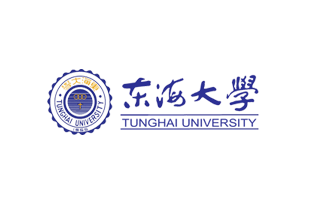Home » Blog » 常遇見的英文寫作問題:主動語態(Active Voice)vs 被動語態(Passive Voice)
常遇見的英文寫作問題:主動語態(Active Voice)vs 被動語態(Passive Voice)
作者: Wallace
發布日期: 2009 / 10 / 21, |
12789 |
人已瀏覽 |

以下是與華樂絲合作過的客戶




















甚麼是主動語態 (Active Voice)
在寫作的時候,一個句子往往會有兩種語態的寫法。一種稱為「主動語態」,而另外一種稱為「被動語態」
主動語態強調的是動作的「主詞」(或是執行者)
範例:
Wind disperses plant seeds.
Smith et al. investigated the relationship.
We have analyzed the results.
主動語態是直接的語氣(為一個主詞-動詞-受詞的結構)、強而有力的、簡潔的。讀者可以清楚的知道「誰」執行了這個動作
| 相關文章推薦:避免主詞與動詞搭配錯誤的十個檢查原則 |
甚麼是被動語態 (Passive voice)
被動語態,相對而言是強調句子中的「受詞」(或是產品)。
Plant seeds are dispersed [by wind].
The relationship was investigated [by Smith et al].
The results have been analyzed [by the method].
被動語態比較起來是較為不直接的(結構為受詞-動詞-主詞),且因為句子的寫法,很有可能會讓句子的表達上較為薄弱、笨拙、冗長而嘮叨。
被動語態用”by”這個連接詞以及過去分詞形態的動詞(如dispersed,investigated)來組成句子。
如果”by”這個連接詞被省略了,也就是省略了被動式中的執行者(the truncated passive),讀者很難於第一時間判斷誰,或是甚麼東西執行了一個動作。
| 相關文章推薦:如何刪除冗餘及改進研究論文的語法? |
最常見的一個被動語態的情況就是當作者使用”It”作為句子的受詞,其實這樣是較為不好的。因為無法定義這個”It”代表的是甚麼。例如:
It is concluded that the treatment is effective.
這種型態的被動語態是模擬兩可的。
除了句子較為笨拙之外,以被動語態所寫的句子,如果沒有架構的很好,很容易造成文法上的錯誤,最常見的就是垂懸修飾語(dangling modifiers),沒有正確連結要修飾的單詞
而若將句子從被動改為主動的會改正這個錯誤並強化這個句子,以下為範例:
Dangling: To investigate the source of nutrients, eggshell membranes were compared. (incorrect passive)
Correction: To investigate the source of nutrients, the study compared eggshell membranes. (active)
Dangling: After analyzing the samples, the plants were measured daily. (incorrect passive)
Correction: After analyzing the samples, the researcher measured the plants daily. (active)
儘管被動語態有這些缺點,其在寫作上被動語態仍占有一席之地。除了可以讓作者多一種方式來改變句子的結構,被動語態也擁有其他的重要功能。
( 請參照主動語態vs被動語態 (二) –何時使用被動語態 )
被動語態的沿革
超過一世紀以前,科學家們習慣以第一人稱代名詞(I,We)作開頭。而到了1920年代左右,這樣的代名詞寫法變得較不普遍,取而待之的是,科學家開始採用被動語態的寫法。
考慮到客觀、非人稱用法並適合科學的寫法,被動語態程成為了數十年來醫學以及科學期刊發表所使用的標準寫法。
當然也有例外,例如1953年時,有一文章是是這樣雅致地開頭:
We wish to suggest a structure for the deoxyribose nucleic acid (D.N.A.).
這篇Watson和Crick的經典文章開頭語是簡單、直接及清楚的。
但如果作者使用被動式的觀點來敘述的話,文章會成為這樣:
In this paper, a structure is suggested for the salt of deoxyribose nucleic acid (D.N.A.).
上述句子強調了接收者的動作,但代價是—這句話已經失去清晰度,如:是誰建議的?句子動詞的強度和整個影響力也都變得相對薄弱。
強調主動語態
近年來,大半的醫學和科學風格導引(style manual) 都支持使用主動語態。
例如:
the American Medical Association’s AMA Manual of Style建議 : “in general, authors should use the active voice, except in instances in which the author is unknown or the interest focuses on what is acted upon.”2
而The Publication Manual of the American Psychological Association (APA)也有相同的建議
“Prefer the active voice….The passive voice is acceptable in expository writing and when you want to focus on the object or recipient of the action rather than on the actor.”3
這些指導手冊和其餘學術寫作的教科書都建議盡量使用主動語態。很多作者也許會認為:句子的重點是那些「受詞」,主詞相對起來沒那麼重要,所以使用被動語態。而這最常在”Method”這個章節出現。
所以,科學和醫學的期刊的投稿說明中,是否有真的去建議作者使用主動語態呢?
答案是: 是的!許多期刊以非直接的方式來建議作者,多半是利用參考風格指引的方式,而這些風格指引就會建議使用主動語態。也同時也會利用以發表的文章來建議,這些文章就是以主動語態寫成。
雖然有些期刊會要求作者不要用第一人稱代名詞,或至少在某些章節不要用。但多半的期刊都會鼓勵,甚至傾向採用使用主動語態的論文,以下摘自各大期刊的說明:
- Behavioral Ecology:”The first-person active voice is preferable to the impersonal passive voice.”4
- British Medical Journal: “Please write in a clear, direct, and active style….Write in the active [voice] and use the first person where necessary.”5
- The Journal of Neuroscience:”Overuse of the passive voice is a common problem in writing. Although the passive has its place—for example, in the Methods section—in many instances it makes the manuscript dull by failing to identify the author’s role in the research….Use direct, active-voice sentences.”6
- The Journal of Trauma and Dissociation: “Use the active voice whenever possible: We will ask authors that rely heavily on use of the passive voice to re-write manuscripts in the active voice.”7
- Nature: “Nature journals like authors to write in the active voice (‘we performed the experiment…’) as experience has shown that readers find concepts and results to be conveyed more clearly if written directly.”8
- Ophthalmology: “Active voice is much preferred to passive voice, which should be used sparingly….Passive voice…does not relieve the author of direct responsibility for observations, opinions, or conclusions (e.g., ‘The problem of blood flow was investigated…’ vs. ‘We investigated the problem of blood flow…’).”9
- Science: “Use active voice when suitable, particularly when necessary for correct syntax (e.g., ‘To address this possibility, we constructed a lZap library …,’ not ‘To address this possibility, a lZap library was constructed…’).”10
- IEEE: “If you wish, you may write in the first person singular or plural and use the active voice (“I observed that …” or “We observed that …” instead of “It was observed that …”). Remember to check spelling. If your native language is not English, please get a native English-speaking colleague to proofread your paper. “11
總結
為了讓您寫的句子更強而有力,更為清楚,除非您覺得有更好的理由去使用被動語態,否則請盡量選擇使用主動語態來撰寫句子。
當主詞未知或當您特別想強調「動作」或是動作的「受詞」,您可以選擇使用被動語態。而這多半發生在”Method”這個章節,因為此章節較少以研究者作為句子的主詞。
額外相關閱讀推薦:
希望我們的英文寫作、英文文法教學及論文期刊投稿指導文章有幫到您!
若有英文編修需求,請試試我們的免費300字試用服務,華樂絲英文編修品質絕對會讓您滿意:
部落格分類標籤: 文法和寫作
訂閱電子報
提供英文文法、中英翻譯、英文寫作技巧以及碩博士生涯規畫等,專為台灣碩博士生與研究者量身打造的學習內容。每週自動寄送至您指定的Email信箱,隨時都能取消訂閱。
超過 315,000 名中港台碩博士生與研究人員訂閱
華樂絲服務項目
文章搜尋
文章分類
演講活動
|
2020.11.27 - 國立臺北科技大學 |
|
2020.11.19 - 工業技術研究院 |
|
2020.11.17 - 國立臺灣大學 |
|
2020.6.16 - 工業技術研究院人力處 |
|
2020.2.6 - 國立交通大學產學運籌中心 |
| 邀請Dr. Steve Wallace演講 |

